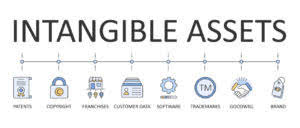Content
- Definition Of Petty Cash
- The Following Statements Are True Regarding The Cash Short And Over Account Except
- Where Does Cash Over And Short Account Go?
- What Are Internal Controls For Cash Disbursements?
- How To Catch Theft With Your Cash Over And Short Account
- Chapter 5 Accounting Review
- Cash Short And Over Example
Any discrepancies identified from reconciling the bank statement become valuable tools in analyzing whether errors are due to theft or some other cause. With enough information, the root issue can be uncovered with further investigation to see if it really is theft, a training error or even a bank error.
- This account is used to record both a shortage and overage of cash in cash drawer.
- The cash account is debited for $99, and there’s a $100 debit for sales and a $1 debit on the cash over and short account.
- Most retailers’ accounting systems have a cash over short account setup because they generally deal with cash sales everyday.
- If your staff isn’t properly trained on how to handle discounts and promotional offers, you might face discrepancies on your next bank statement.
If you are short or over use 4990 or 8990 to reconcile to the total. If the actual balance is ever different from the amount that should be in the fund the discrepancy should be noted as cash over or cash short. The Accounting Services office or Internal Audit may count the fund at any time. A written response must be provided by the employee to the immediate Supervisor no later than 24 hours after the occurrence. The events should be documented in the employee’s personnel file which is maintained in the Office of Human Resources. This account doesn’t have a normal balance as it only summarizes the cash usage.
Definition Of Petty Cash
Once approval is submitted todecreaseyour petty cash/cash drawer, complete an Advanced Deposit e-doc and deposit the cash on hand. On the DV, use payment reason “Z”, and make payable to the custodian of the petty cash/cash drawer account. Cashier balancing is a process usually conducted in businesses such as grocery stores, restaurants and banks that takes place at the closing of the business day or at the end of a cashier’s shift. This balancing process makes the cashier responsible for the money in their cash register. “There is rarely a difference between actual cash receipts and that day’s record of cash receipts.” This financial statement details your assets, liabilities and equity, as of a particular date.
- The amount of the cash overage or cash shortage is usually small.
- Significant discrepancies are more likely to cause an investigation as they are more serious, while it might not be worth the time, effort, or money to investigate minor discrepancies.
- It’s also the name of the account where the firm records these cash discrepancies.
- Allows you to use payment reason “Petty Cash Custodian Replenishment,” which has more object codes available than the “Reimbursement of Out-of-Pocket Expenses” payment reason.
- However, it is often difficult to effectively manage that money, especially if you take money from customers and give them change.
- Thus, it is a loss as we give much more change of cash to customers.
To establish a petty cash fund, someone must write a check to the petty cash custodian, who cashes the check and keeps the money in a locked file or cash box. The journal entry to record the creation of a petty cash fund appears below.
The Following Statements Are True Regarding The Cash Short And Over Account Except
A cash over situation will increase a company’s net income and increase its cash balance in the general ledger. All records of cash should be on the cash register at the time of each sale.
Companies replenish the petty cash fund at the end of the accounting period, or sooner if it becomes low. In this case, we need to make the journal entry for cash shortage at the end of the day or when we make cash short and over the replenishment of petty cash if there is less cash on hand than the amount it is supposed to be. Read on to learn how to balance your cash drawer as well as tips and tricks to keep your drawer in shipshape.
In this article, we cover how to account for the cash short and over; especially on the cash over and short journal entry. If a company has a cash short situation, which is more common, the amount it is short will reduce the company’s net income and its cash balance in the general ledger.
Only when the fund is reimbursed, or when the end of the accounting period arrives, does the firm make an entry in the journal. When there is a cash shortage, it is treated as an expense; thus we recorded on debit. In contrast, when there is an overage, it is treated as income; thus we recorded on credit. Account NameDebitCreditCashXXXCash Over and ShortXXXSalesXXXIn most cases, customers will most likely to dispute a shortage of change.
Where Does Cash Over And Short Account Go?
The account is typically left open until the end of a company’s fiscal year, when it is then closed and reported as a miscellaneous expense on the income statement. AccountDebitCreditExpenses$$$Cash over and short$$$Cash$$$The cash over and short account is the type of miscellaneous account in the income statement. If its balance is on the debit side, it is usually presented in the miscellaneous expenses. On the other hand, if its balance is on the credit side, it will be presented as miscellaneous revenue instead.
If you start noticing cash drawer discrepancies time and time again, something might be up. A cash-over-short account is an accounting tool used to manage financial discrepancies between sales and accounting. If a customer pays too much or too little, the difference goes into this account. The same happens if an employee steals petty cash from the register. The account is credited or debited depending on if there is too much or too little money in the sales account. The accounts are one of the several detectives controls businesses have at their service to detect financial and accounting problems.
However, it is often difficult to effectively manage that money, especially if you take money from customers and give them change. This can lead to several problems, not least of all a cash over and short issue. Internal tampering could cause a business to be over and short in its accounting. Over and short—often called “cash over short”—is an accounting term that signals a discrepancy between a company’s reported figures and its audited figures. The term also is the name of an account in a company’s general ledger—the cash-over-short account.
What Are Internal Controls For Cash Disbursements?
At the completion of each sales day, the cash drawer needs to reconcile. Now, the bills and change that were put off to the side get counted, along with the checks from the cashier’s drawer. Most cash registers can print up a sales slip and money tendering slip that tells how much money the cashier made in sales and how much money the cashier is accounted for. The manager refers to this slip when counting the cashier’s sales money. If the money counted does not match what is on the balancing slip, the cashier may be over or short . Whenever a discrepancy such as overages or shortages occur, the money is usually counted again to ensure that the amount is correct.
Branch accounting is a system in which separate accounts are maintained for each operating unit of a corporate entity or organization. An account history is a record that keeps track https://www.bookstime.com/ of all activity within an account such as trades, purchases, and other transactions. It is important for recording the transaction as well as the security in having the paper trail.
A company creates a voucher each time the petty cash account is used. The reason for replenishing the fund at the end of the accounting period is that no record of the fund expenditures is in the accounts until the check is written and a journal entry is made. (Sometimes we refer to this fund as an imprest fund since it is replenished when it becomes low.). And while these systems can’t completely eliminate the likelihood of employees making errors, they can help you identify and fix the mistakes before they snowball into bigger, more time-consuming problems. At the end of an accounting period, after closing entries have been journalized and posted, the accumulated depreciation accounts will have zero balances. The purpose of a change fund is to enable the cashier using the cash register to have enough coins and currency to conduct business for the day.
How To Catch Theft With Your Cash Over And Short Account
Cashiers have lost their jobs to cash overages/shortages, either for repeated violations or for large overages or shortages. In most establishments, termination on the first offense is usually for $100.00 over/short or more. Shortages usually result from bills sticking together or from the cashier giving back too much change, or maybe even “pocketing” some money from the register. Overages occur from taking too much money from customers or not entering items in the point of sale terminal properly. In this case, we can make the journal entry for cash shortage by debiting the cash account and the cash over and short account and crediting the sales revenue account. Companies assign responsibility for the petty cash fund to a person called the petty cash custodian or petty cashier.
- If this is different, we need to make our debits and credits equal.
- Prior to KFS, both petty cash and cash in drawer were considered petty cash.
- The cash overage or cash shortage may also come from the sale and other expense transactions too.
- However, to make it easy, we will only look at the petty cash transaction as the journal entry is usually the same.
- To illustrate, we will close the $100 original petty cash fund by returning the cash to the checking account with a debit to cash and a credit to petty cash.
- For example, at the end of the month, the receptionist of the company ABC needs to request reimbursement to refill the petty cash fund of $100.
The sums in the account are usually so low that the balance of the account will be combined with other trivial sums listed as other expenses on the income statement. Therefore, the cash over and short is usually at debit balance which represents an expense.
It is an amount of cash that is physically separated from other forms of cash and immediately available for disbursement upon proper authorization. The petty cash fund provides convenience and efficiency for payment of small amounts without writing a check. The custodian of the fund maintains the cash and receipts for expenses, which usually sum to a specified total.
Instead of collecting $101 for the shoes, Tony collects $99 without realizing it. The cash account is debited for $99, and there’s a $100 debit for sales and a $1 debit on the cash over and short account. Let’s say that Tony rings up a pair of running shoes for $100, which is the correct value of the time. However, Tony miscounts how much money he gets from the customer for their purchase.
Cash over and short accounts are also used widely to balance the company’s accounting records when it replenishes its petty cash account. For example, on December 22, after reconciling the cash on hand with the cash sales, we find that there is a cash shortage of $5. The total amount of cash sales in the sales receipts is $2,790, however, the actual cash we have is only $2,785 (excluding the $100 cash prepared for small notes changes at the beginning of the day). This is probably due to there have been many transactions for our retail business as it is near holiday resulting in errors in our calculation. AccountDebitCreditExpenses000Cash over and short000Cash000In this journal entry, the credit of the cash account is to refill the petty cash fund to its full established petty fund. At the same time, it also represents the cash outflow from the company as a result of petty cash expenses during the period. That is why we debit the expenses account in the above journal entry.
Chapter 5 Accounting Review
Before Julia can reimburse her co-workers for expenses, they must provide her with a receipt for their expenses. Most retailers’ accounting systems have a cash over short account setup because they generally deal with cash sales everyday. A larger balance in the account is more likely to trigger an investigation, while it may not be cost-effective to investigate a small balance. The cash over and short account is an account in the general ledger. The account stores the amount by which the actual ending cash balance differs from the beginning book balance of cash on hand, plus or minus any recorded cash transactions during the period. For other types of businesses, it usually occurs when the cash on hand, left after petty cash expenses, is less than the total amount in petty cash expenses receipts. Remember, for all journal entries, total debits must equal total credits.
This is because they involve with cash sales that currency changes are required. Once this is recorded, you’ll see it on your reports – including the Store Summary, the how to find cash short and over Register Report, and the Over/Short report.
A negative result represents a cash short amount, while a positive number represents a cash over amount. This means the petty cash account has a cash short amount of $10. Petty cash is a small amount of cash on hand used for paying expenses too small to merit writing a check. The opposite is true for transactions that produce cash shortages. Assume the same situation except that I receive $94 instead of $96 for the sale.




